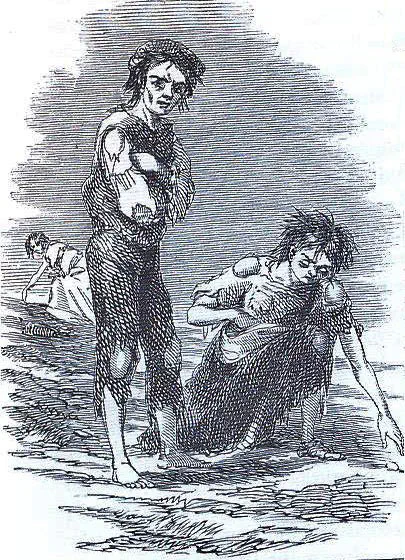- March 30, 1851
The census records show that a significant number of the population in Ireland was reduced from 8,414,836 in 1841 to 5,344,293 in 1851. A 1851 census shows the population of Ireland to be 6,552,385: it has declined by one-fifth since 1845.
As a result of the famine, many Irish families were forced to emigrate from the country. By 1854, between 1.5 and 2 million Irish left their country. In the United States, most Irish became city-dwellers. With little money, many had to settle in the cities that the ships they came on landed in. By 1850, the Irish made up a quarter of the population in Boston, New York City, Philadelphia, and Baltimore. The 1851 census reported that about one third of the inhabitants of Toronto, Canada, were Irish. The Famine is often seen as an initiator in the steep depopulation of Ireland in the 19th century, however, it is likely that real population began to fall in 1841 with the Famine accelerating any population changes already occurring.
The Great Famine or the Great Hunger, known more commonly outside of Ireland as the Irish Potato Famine, is the name given to a famine in Ireland between 1845 and 1849. The Famine was at least fifty years in the making, due to the disastrous interaction of British economic policy, destructive farming methods, and the unfortunate appearance of the Blight —the potato fungus that almost instantly destroyed the primary food source for the majority population. The immediate after-effects of The Famine continued until 1851. The number of deaths is unrecorded, and various estimates suggest totals between 500,000 and more than one million in the five years from 1846. Some two million refugees are attributed to the Great Hunger (estimates vary), and much the same number of people emigrated to Great Britain, the United States, Canada, and Australia.

 ← Charles Plummer, Irish language scholar and editor of Lives of the Irish Saints, is born
← Charles Plummer, Irish language scholar and editor of Lives of the Irish Saints, is born
 The Ecclesiastical Titles Act forbids Catholic bishops to assume ecclesiastical titles taken from any place in the United Kingdom →
The Ecclesiastical Titles Act forbids Catholic bishops to assume ecclesiastical titles taken from any place in the United Kingdom →